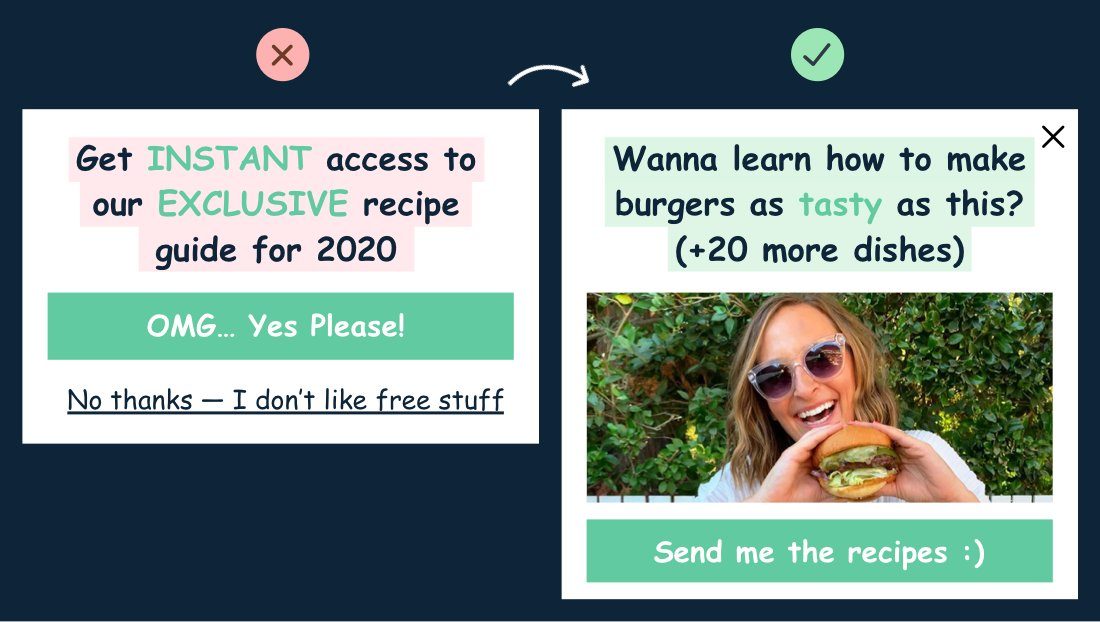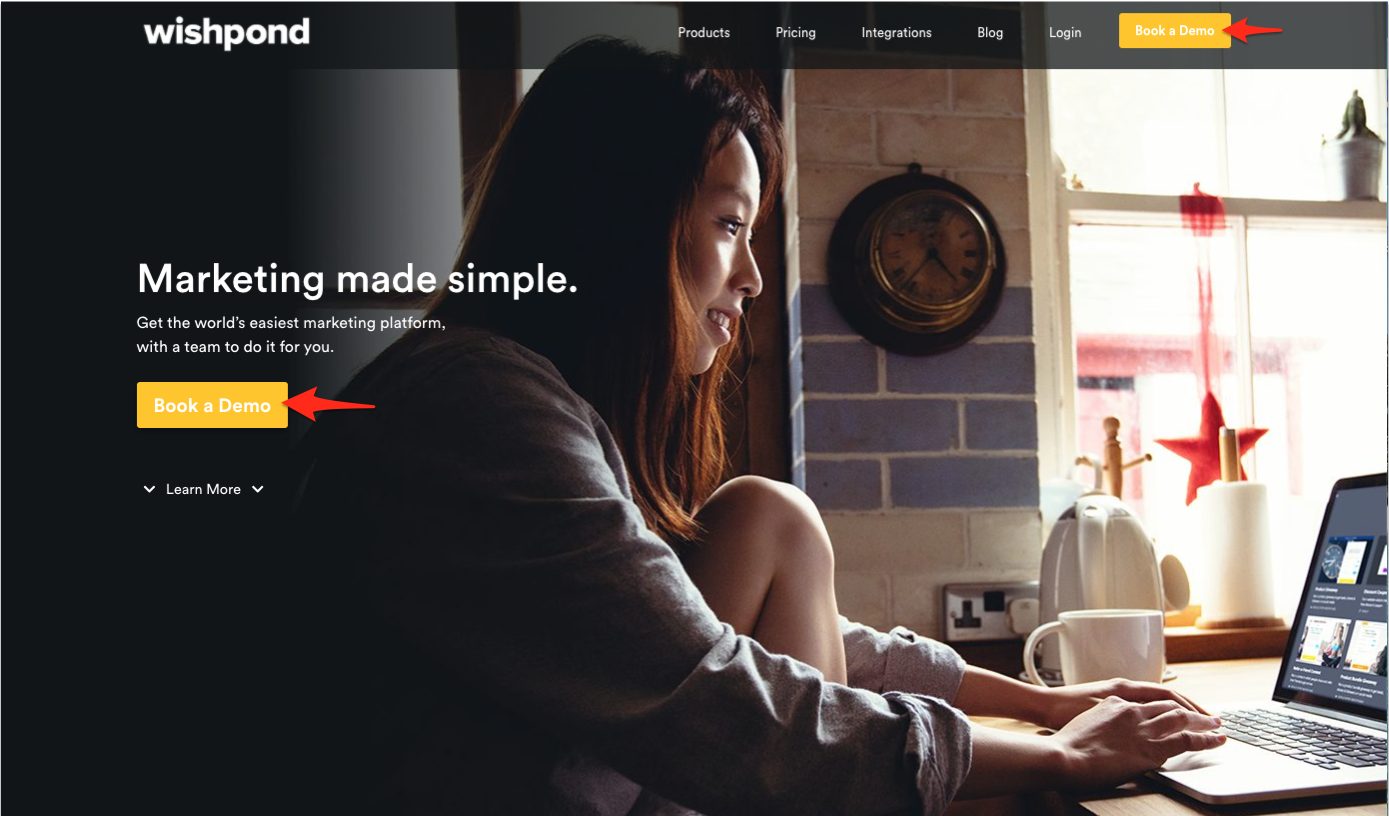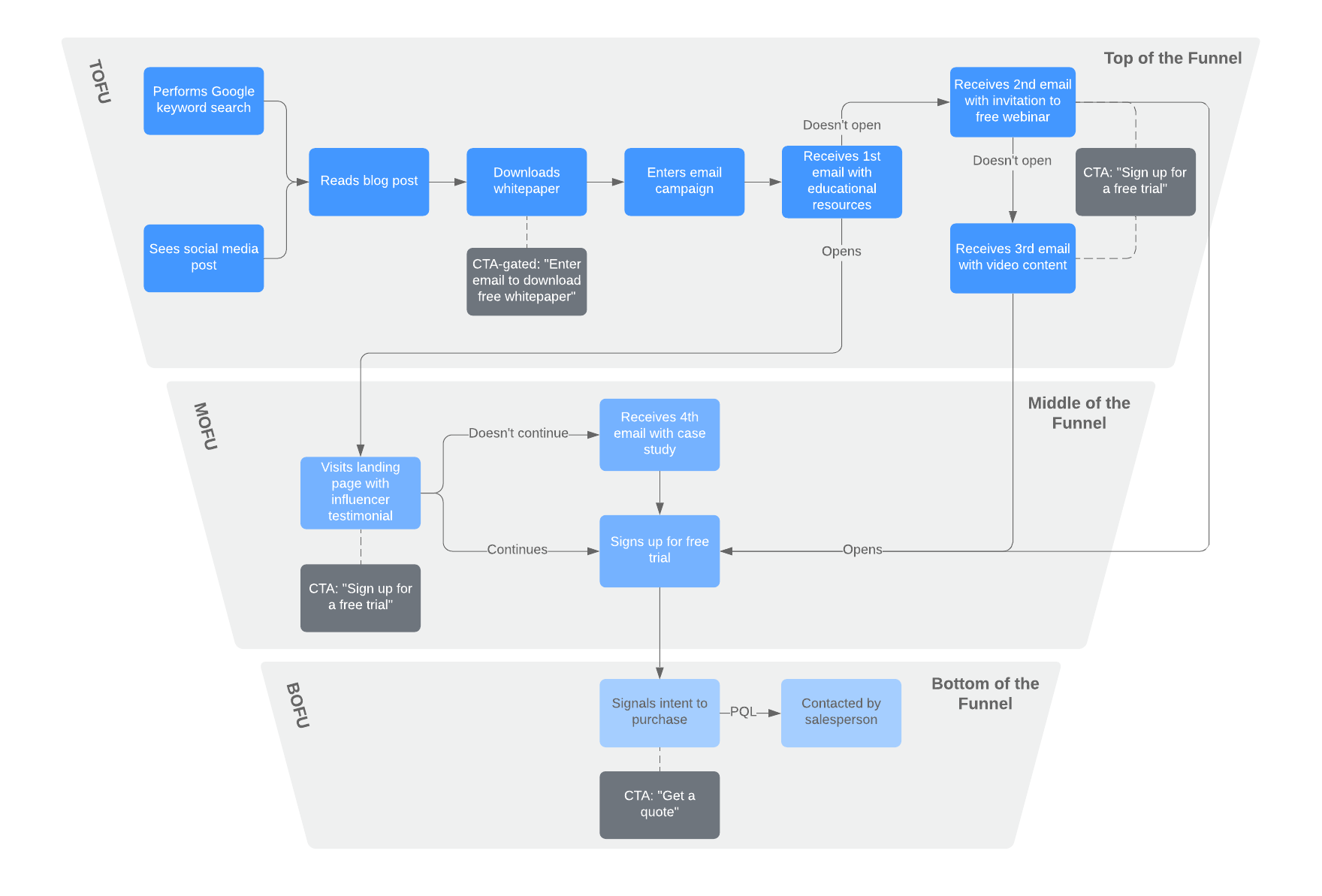
Generating qualified leads has its own set of challenges, but it’s what comes after this stage that makes all the difference to your sales success. It’s also where many sales and marketing teams seem to struggle.
Unfortunately, we see teams all the time that have no trouble generating qualified leads, yet their conversions never seem to line up with the demand. This could be a sign that their lead nurturing strategy is poor, or in some cases, non-existent.
If you don’t know how to nurture your leads properly, the conversions you expected from your lead generation will hardly materialize. This could lead to sales and marketing misalignment and bruise the trust between two crucial teams.
So what’s the magic formula to lead nurturing? How do you move leads further down the funnel with more care, consideration, and strategy?
In this guide, we’ll show you how to get the most out of your leads, starting with why lead nurturing is so vital to your sales process.
5 Reasons Why You Can’t Ignore Lead Nurturing
Before you can pat yourself on the back for generating new leads, it’s crucial that you see this as the first step in your sales process, not the last. If you fail to nurture your leads, like we so often see, you’re setting up your sales team to be disappointed.
Your hard work and time spent capturing leads will be wasted. Ultimately, your business will lose out on a potential sale that was once within reach. Lost sale after lost sale begins to pile up, and then we have a real problem.
Before getting to this low point, it pays to understand the importance of nurturing your leads. Lead nurturing is the process of warming up leads through data-driven personalization so it has a higher chance of converting into a sale.
Here’s why this part of your sales journey is so essential:
1. Lead nurturing converts leads on the fence
As exciting as it is to score a new lead, the truth is that most people in this stage are not prepared to buy just yet. Yes, they’ve taken the first step by showing interest, but there’s still time needed for them to research and weigh their options.
While a lead takes their time, your team needs to be active in engaging them, “warming” them up, and nudging them closer toward a conversion.
Learn their pain points and why they opted in. Offer them helpful content and marketing assets based on their expressed pain points. Provide in-depth details about your product or service that can meet their unique requirements. You’ll need to propose the sale in different ways without turning them off or overshooting boundaries.
We’ll show you how to develop a few lead nurturing campaigns that meet your prospect several times along your sales cycle and inch them closer to a purchase later in this guide.
2. Nurturing reduces dormant leads in your database
Lead nurturing is great for separating the cold leads from the warm ones. Through lead nurturing, you’ll be able to segment leads based on how long they’ve been in the cycle, their expressed interest, and how far along they are in conversations with your teams.
Remember, not all leads are golden leads. So it’s worth spending more time on the ones with a greater chance at converting. Lead scoring helps with this process, but we’ll dive into that a little later.
3. You can shorten the length of your sales cycle
Lead nurturing is an effective strategy for moving your prospects through your sales cycle much faster.
Since you’ll be in touch more often, you’ll be able to keep nudging leads closer to the bottom of your sales funnel versus letting them get stuck towards the top and later going cold. This not only reduces your sales cycle length, but also increases your chances of closing the deal and creating new customers.
4. It creates brand advocates
Did you know you can have prospects absolutely stoked about your brand long before they convert to customers?
Keep providing valuable content and tools to your leads, and they’ll be even more likely to share what your brand offers and how you’ve engaged them so far.
The core to lead nurturing is providing value to your prospects and treating them like customers, even if they’re not yet. These actions help them feel welcomed and supported.
In return for helping them solve problems along the way, these leads will reward your brand with word-of-mouth recommendations to their colleagues and high praises on their social media channels.
5. Build higher-quality leads for your sales team
When a qualified lead comes in, they’re technically considered “warm” because they’ve expressed interest in what you have to offer. Then lead nurturing heats them up further, putting them in a better position to buy.
So when your sales team goes in for the close, they’ll have a much easier job converting.
These leads already have an idea of what to expect and see your product or service as a solution. These traits make them a much higher quality lead than cold ones who have little clue how you can help them.
7 Steps To Getting The Most Out Of Your Leads
Now that you understand more about why lead nurturing is so crucial, it’s time to give our seven-step breakdown of getting the most out of your nurtured leads.
Step 1: Define what makes someone a “good” lead
In order for marketing and sales teams to be aligned, there needs to be a clear definition of what makes someone a good lead. You also need to be on the same page as far as the messaging and offers you plan to use.
Both of these actions ensure less confusion along the way. And it prevents your leads from running for the hills because of some internal mismatch.
Have a sit down or video conference with your sales and marketing teams to brainstorm and define a good lead. The more specific you can get here, the better.
Is it a key decision-maker at a certain sized company? Or is it as simple as someone who’s tried your free demo and found it useful? How about someone who engaged with your live chat or chatbot?
These details can help your marketing team work backward by creating enticing offers and messaging that resonates with this key target audience.
You’ll want to do this at the start of your lead nurturing campaign and a few weeks in so everyone stays on the same page even if things shift.
Both teams should also get together to see what changes can be made and how those changes affected the numbers after some time. This will help you fine-tune your lead nurturing so you capture and convert more leads as you evolve your strategies.
Set up source tracking so everyone knows where the leads are coming from and which channels are most effective at bringing these in. Source tracking is also ideal for learning which messaging works best and which needs work.
All this information will help optimize your lead nurturing to function like a well-oiled machine.
Step 2: Create and distribute targeted content
Discussions with sales should reveal that a few different buyer personas. This means you may not be able to use a one-size-fits-all content marketing strategy, and you may need to create several lead magnets to capture each one’s attention.
However, by knowing your audience, you’ll have a much easier time creating and delivering content that provides value to each segment. And when you do this, prospects will move more smoothly through your funnel.
As mentioned in this guide on lead magnet ideas, there are many options you can choose to do this, like industry reports, checklists, quizzes, and more. The right magnet will depend on the audiences you uncovered in step one. For example, here’s a targeted fly-in quiz by GetVoIP built specifically to match users to their right business phone system:

When delivering personalized content, be sure not to “persuade” too hard or come off as spammy. This is a surefire way to turn off your audience. Below is a great example of how simple copywriting and a clear call to action can deliver value. This user knows upfront what they’re going to get out of this relationship.

You may likely find that more than one content type works best, but you won’t know this until you truly understand what your audience is looking for and test out your assumptions.
The goal of this step is not to create content just for the sake of doing so. Rather, it’s to provide your target audience enough value that they see your brand as the solution to solving their problem. Spend some time working on creating a solid content offer before moving on to the next step.
Step 3: Follow up with leads while they’re still “warm”
Before launching your lead magnet, make sure you also have follow-up protocols in place. Essentially, you want to trigger a follow-up as soon as someone takes action, such as when they give you their email address to snag your content offer.
We suggest making this a two-part step:
First, send these new leads to a ‘Thank You’ page with instructions on what to do next. Here, share that you’re thankful for their interest and that you’re sending them the offer via email.
Then, give them a heads up to “whitelist” your email address so future updates don’t go to spam — and remind them to check their spam folder in case your offer goes there initially.
This extra layer of security ensures that your message actually makes it to their inbox instead of getting lost in the email aether.
Here’s a peek at what that looks like in action:

Step 4: Send personalized emails to keep the conversation going
Once you set up your thank-you landing page, your next step is to create a personalized email message that sends your leads the offer and another thank-you message.
We talked about this in our guide on what to do after a lead is generated, so we’ll only offer a quick recap here:
A thank-you email is important to show that you’ve received this lead’s content request and want to make a great first impression by starting off on the right foot.
Think of this like personally greeting someone to your brand, similar to what you would do in-person if someone walked into your brick-and-mortar store.
Your thank-you offer should be visually appealing and introduce your brand and how you plan to help. Make it personal, add your brand’s colors and signature personality, and welcome this person with open arms.
That’s how you make a killer first impression.
Here’s an excellent example of what that looks like:

Whatever you do, never use a standard template message. This will lead many to think your company doesn’t really care enough and trigger an unsubscribe ASAP.
Step 5: Push for a secondary conversation
On top of thanking each person and introducing your brand, it’s also smart to try and capture one more conversion while they’re still eager.
Now, this doesn’t mean asking for the sale immediately. Instead, it’s about getting them to take smaller steps in the meantime. So this could be following your brand on social media, for example, or signing up for a free demo.
Remember, this is when your lead is the warmest, making it the perfect time to strike. But, again, it may not be the right time to ask for the sale.
When sending leads to your social media channels, keep the chat going and connect with them online. You may find that more people are willing to do this than sign up for a free demo, especially when you engage one-on-one.
However, you won’t know this answer until you test both options to see which converts better.
Mockingbird, a trendy DTC stroller brand, kept it super simple by asking new email subscribers to visit their website to see what more they offer:

In their email tracking software, their team can see who clicked this button and who scrolled right on by, which gives them great insight to run with.
Step 6: Segment your audience
As your prospects enter and move through your sales funnel, don’t forget to tag them and start segmenting your audience. This is the process of separating your audience into smaller subgroups so you can deliver the most relevant content.
For example, you can segment audiences based on:
- Geographics: Country, language, climate, etc.
- Demographics: Age, gender, income, family status, social status, etc.
- Contextuals: Interests, personality, concerns, values, beliefs, etc.
- Behaviorals: Search intent, buyer stage, engagement levels, etc.
Segmenting based on the data above increases your chances of providing personalized experiences for your leads. It also allows you to provide specific demos, trials, and other offers to audiences based on their unique actions.
Without proper segmentation, it’s very difficult to personalize content for your audience.
Step 7: Develop a lead scoring method
As you segment your audience, you should also get in the habit of lead scoring. Put simply, you’ll assign higher values to leads that are closer to converting and lower scores to those just entering your sales funnel.
After deliberation, your team may decide that signing up for a free offer makes someone a “one” on your lead scoring scale while signing up for a free demo – like when people use the yellow button on our home page, pictured below – pushes them closer to a “five.”

You can have your sales team focus on leads ranked above a “five” while your marketers continue to nurture leads under this target score.
You may be wondering how this differs from segmenting your audience, and that’s a good question.
Think of segmenting like separating your audience so you can better tailor your messages. Lead scoring, on the other hand, is like telling your teams what to focus on so leads earn higher scores and climb the ranks (i.e., your sales funnel).
Both strategies are equally important to tackle together.
5 Reasons Why Your Current Lead Nurturing Strategy Might Suck (+ What You Can Do To Fix This)
The best way to tell if your lead nurturing strategy works is to ask your sales team how it’s going. If they can’t identify a roadblock preventing your high-quality leads from converting, here’s what might be going on:
1. You're qualifying the wrong leads
We mentioned earlier how not all leads are created equal.
Just because someone comments on a Facebook post or DMs you on social media asking for more information doesn’t necessarily mean they’re a good lead off the bat.
Sure, maybe after nurturing these “leads” they could be. But if you’re just handing them over to sales from there, it’s no wonder they’re not converting – they’re not ready to.
To avoid this frustration, it’s important that you sit down with sales to determine what a good lead looks like for them.
This could be a particular demographic, such as when a key decision-maker reaches out, or as simple as someone who’s tried your free trial before getting passed along to sales.
The goal here is to touch base with sales to see who’s more likely to convert for them. Then it isn’t just about finding people in this position, but also grooming leads to get there through nurturing strategies.
Doing this will also provide more intel to help you create better lead magnets.
2. Your lead magnets miss the mark
Anyone can sign up for your lead magnets. It’s as simple as dropping in an email address and hitting submit. But it’s what your potential leads do after that matters more.
While you can’t always see if they’ve read your lead magnet, for example, you can keep track of what happens next.
With a secondary conversion, you can see if a lead moved into the next phase of your funnel. And if they did, this is a good sign that your lead magnet was valuable enough that they kept going and remained interested.
On the other hand, if you notice a huge uptick in unsubscribes after people signed up for your lead magnet, you have two pieces of information at your hands:
- The lead magnet was not actually helpful.
- It only captured people who wanted free help.
Either case proves that your lead magnet needs work.
If leads didn’t find enough helpful information, your team must go deeper next time. And if leads found your content upgrade so beneficial that they no longer need your product/service, maybe try not to give away so much information that it solves all their problems.
Can’t figure out which bucket your leads fall into? Send out a quick survey to those who stuck around and those who jumped ship. You’ll have real feedback for why they reacted the way they did to help you improve the next lead magnet.
Now, if no one signs up for your lead magnet, it may be your messaging that needs attention. Try to prove the value someone will receive by downloading it sooner. And keep your message brief so they don’t miss out on what you have to offer.
3. You're not testing your nurturing campaigns
Testing is crucial in any form of marketing. Without testing, you’re just making assumptions on what works, what doesn’t work, and what your segmented audiences actually want, which is why you absolutely need to test your nurturing campaigns.
There are a few ways to do this. One way I recommend is through lead management software with lead flow capabilities, which may look something like the chart below:

You can segment where your leads move through the funnel based on the interactions they take. For example, someone coming through an organic search may have different intent than someone holding a five-minute live chat conversation. Based on your data, they probably shouldn’t go through the same lead path.
You can also A/B test your content within the funnel using software like Optimizely, ClickFlow, VWO, and others.
Let’s say you have a lot of traffic coming through a specific piece of content, but hardly anyone is interacting with your lead magnet. This is an opportunity to make some design or messaging changes and A/B test two options. Whichever option performs better is the option you’ll run with in the future.
Remember, lead magnets can get stale and lose their touch. If you had a lead magnet about in-office work, it probably wouldn’t perform well in 2020 where remote work is seeing a surge.
Keep a tab on magnets that are susceptible to losing their value.
4. You're not following up with leads
This may seem like an obvious one, but are you actually following up with your leads? Some experts believe you have up to 48 hours to do this, but we’d caution against waiting so long.
Waiting 48 hours — or worse, not reaching out — could put you at risk of losing the lead altogether, which is essentially like not getting it in the first place. That means time, money, and effort wasted.
Follow up with leads anywhere from 12-24 hours after the first point of contact. Don’t do it too soon, give them some time to digest the content.
Learn as much as you can about the lead and their interest in the initial touch point – this may be an email or better yet, a call. The more you learn about a lead, the more personalized content you’ll be able to deliver in the later stages. And most of all, be sure to track all touch points in your CRM software.
5. Your marketing and sales aren’t aligned with their messaging
There are few things worse than marketers promising one thing in the lead nurturing stage and then sales has no idea and can’t deliver on it. Doing this is a surefire way to lose or confuse a lead and bruise trust between the two teams.
As a matter of fact, disjointed messaging and brand storytelling is the #2 most detrimental factor resulting from team misalignment, according to SuperOffice:

So before getting to that point, you must collaborate with sales to see what offers and messaging seem to convert best for them.
Once armed with this intel, you can use this information throughout your lead magnet messaging so everything lines up seamlessly.
If a free trial seems to work best, for example, use that as your focus. Make everything promote and lead up to this.
Or if you’re offering a discount, make sure your sales team knows what the offer is, so they’re not blindsided by the expectation of a lower rate/bigger discount than they planned on giving.
Final Thoughts
You have a lot of leads. Great. Now what are you doing with those leads to make sure they don’t go cold or lost interest?
Through lead nurturing, you’ll be able to slowly move the needle on leads who are on the fence. You’ll be able to provide personalized messaging at the right moments and to the right audiences. No more unflavored email blasts.
If done right, lead nurturing will lead to shorter sales cycles and may even create brand advocates in the long run – even if those advocates don’t convert.
But lead nurturing is a joint effort between marketing and sales. As a marketer, you need to keep your sales team in the loop on marketing messaging.
As a salesperson, you need to track your interactions with leads and take considerate notes. Both teams need to work in tandem for lead nurturing to produce real results, and to make sure customer messaging isn’t disjointed.
For lead nurturing newcomers, closely follow our blueprint of seven steps to get the most out of your leads and ensure you’re setting up your sales and marketing teams for success.
If you’re able to meet each step, you’ll have no problem converting the leads you worked so hard to generate.
About the Author 
Devin Pickell is a Growth Marketer at Nextiva. He combines his skills in content marketing, SEO, data analysis, and marketing strategy to meet audiences at the right moment in their journey. He has helped scale SaaS brands like G2 and Sphere Software, and contributed to G2’s traffic growth of more than 1 million visitors per month.
from Wishpond https://ift.tt/35FApnY
via IFTTT
Comments
Post a Comment